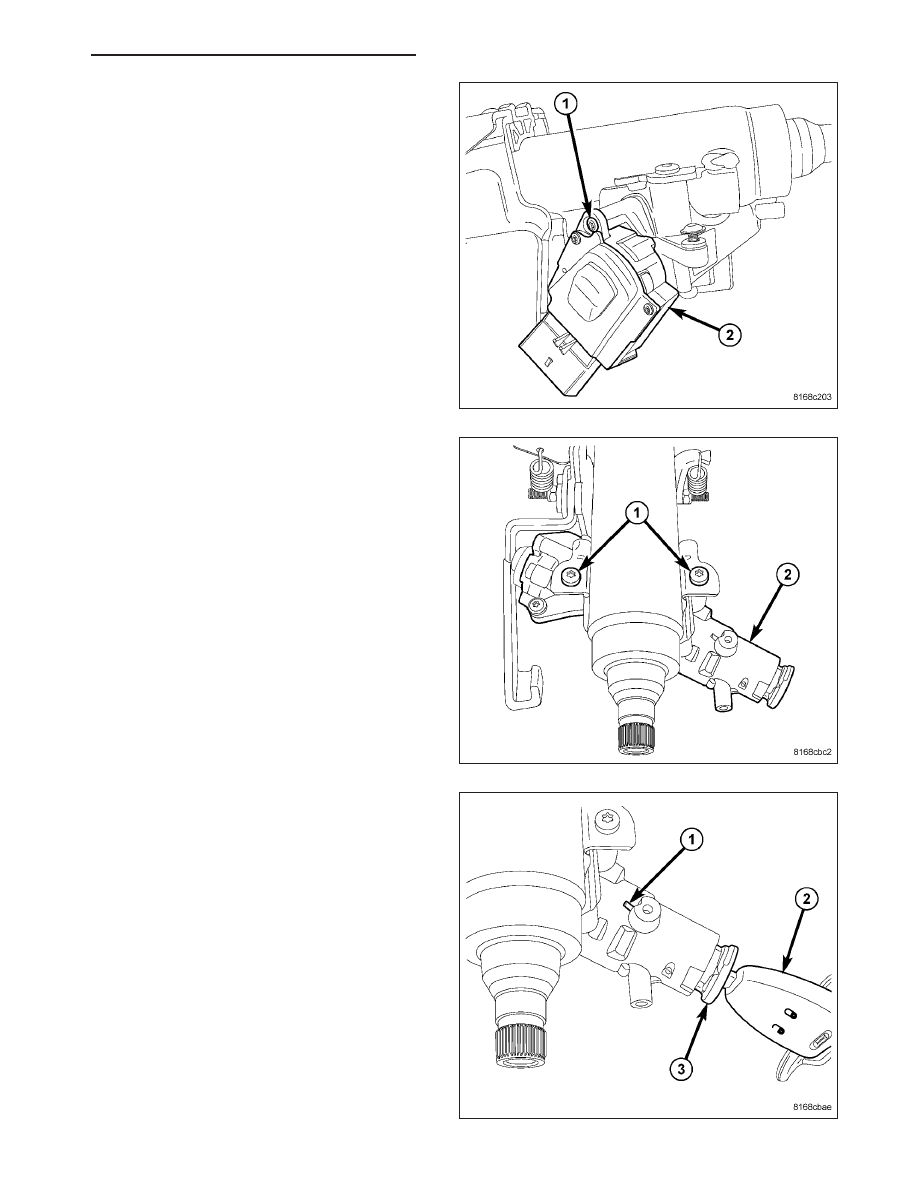Dodge Caliber. Manual - part 323

3. Install the ignition switch (2) mounting screw (1).
Tighten the screw to 2 N·m (18 in. lbs.).
NOTE: Ignition switch needs to be installed on
lock cylinder housing before housing installation
to clear tilt lever.
4. Position the lock cylinder housing in the RUN posi-
tion.
5. Align the lock cylinder housing (2) with the steering
column.
6. Install the two screws (1) fastening the lock cylin-
der housing (2) to the column. Tighten the screws
to 12 N·m (110 in. lbs.).
7. Place the actuator in the lock cylinder housing to
the RUN position (if not already there).
8. Insert the key into the key cylinder and turn the key
cylinder to the RUN position.
9. Align the retaining tab on the key cylinder with the
slot in the top of the lock cylinder housing.
10. Slide the key cylinder into the lock cylinder hous-
ing until the key cylinder retaining tab locks the
cylinder into place.
11. Rotate the key back and forth (OFF to START),
then remove and reinstall it, making sure the key
cylinder
and
lock
cylinder
housing
operate
properly.
PM
IGNITION CONTROL- SERVICE INFORMATION
8I - 53